Orthotics Melbourne
What are Orthotics?
Biomechanical and alignment anomalies can significantly impact the lower limb, including the back, hips, knees, and feet. The benefits of orthotics are to support, align and improve the function of the feet and lower limbs during gait to improve functionality in walking.
Orthotics work by applying forces to the feet and distributing the load more evenly through the foot, enabling the podiatrist to alter specific movements or offload stress within the tissues. In addition, orthotics provide pain relief and ongoing support to allow for realignment of the knees, hips, and spine, thereby relieving a range of musculoskeletal problems not limited to the feet.
Patients with recurrent lower limb injury, arthritis, diabetes, or circulatory conditions are at increased risk; thereby, orthotics can act as an effective preventative treatment.
Conditions Orthotic Devices may help:
- Achilles tendonitis
- Heel Pain
- Metatarsalgia
- Claw Toes
- Pronation (flat feet)
- Supination (high arch feet)
- Bunions
- Tibialis Posterior Dysfunction
- Shin pain
- Knee problems
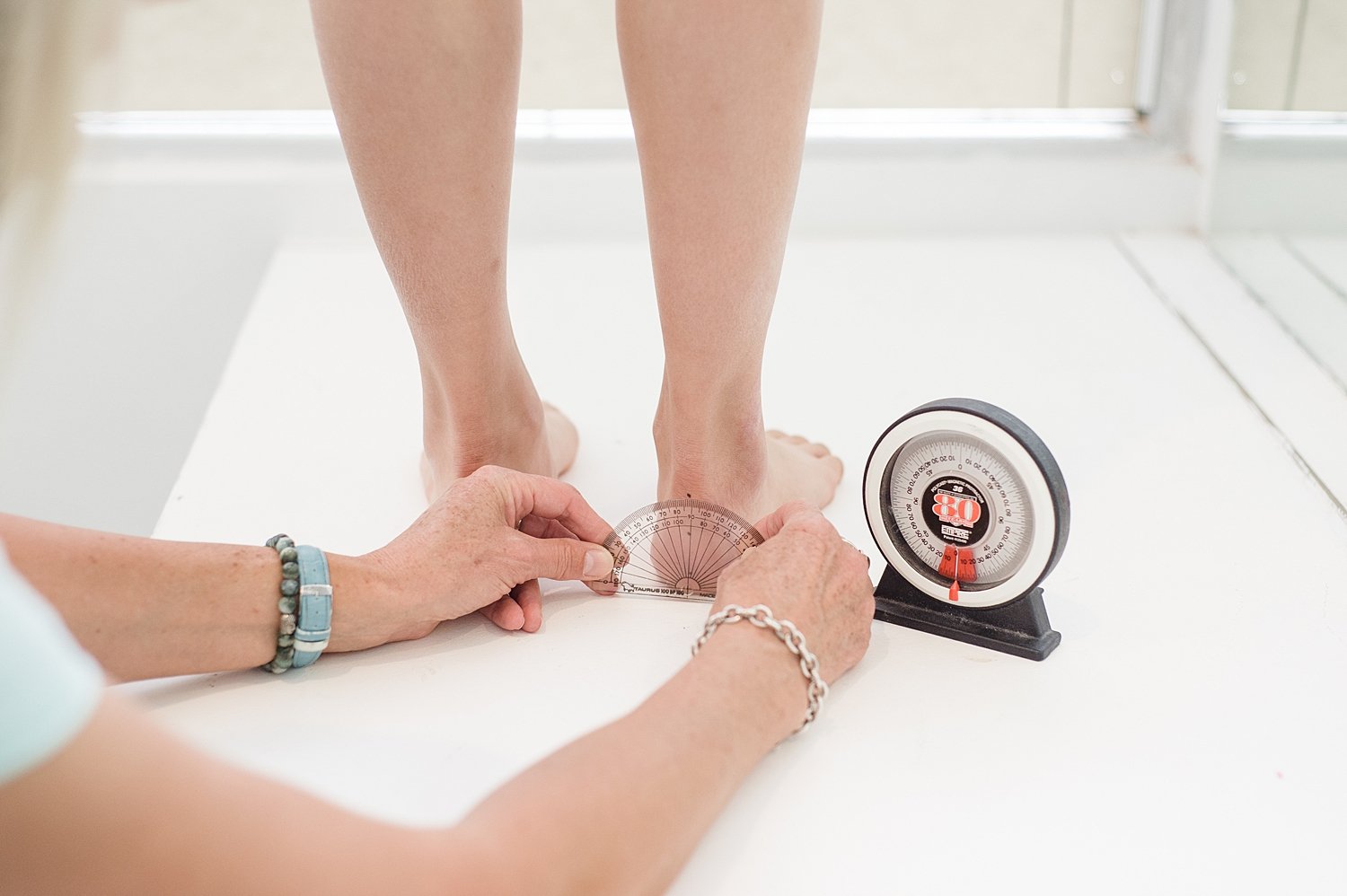


Do I need orthotics?
Custom foot orthotics are inserts that are worn inside of shoes. They differ to off-the-shelf orthotics in that they are designed specifically to an individual’s foot shape, foot posture and function. They act by supporting the feet and correcting alignment, which aids in more efficient foot function.
At Highett Podiatry, we pride ourselves on using the latest of technologies including 3-D scanning and 3-D printing of your orthotic devices.
Our prescription of orthotics is conducted in an ethical and caring manner. We pride ourselves on following our patients closely through their orthotic prescription, wearing in process and injury resolution. We ensure all our patients expectations are met fully and work on the principle that “orthotics should be comfortable” and “shouldn’t feel hard.”
Our Podiatrists can prescribe custom orthotics to treat a range of foot, ankle, leg and lower back pathologies.
Examples of common conditions that can be treated with orthotics include:
- Bunions
- In-toeing / Out-toeing
- Osteoarthritis
- Ankle and Knee Pain
- Shin Splints
- Stress Fractures
- Neuromas
- Toe Walking
- Flat Feet
- Aching Feet
- Heel Pain / Arch Pain
- Achilles Tendinopathy
- Plantar Fasciitis
- Corns and Callouses
Gait Analysis and Biochemical Assessment
We use treadmill, video and the latest in biomechanical analysis software to get the highest quality and most accurate assessment of your gait.
Our podiatrists with a “good eye” will also conduct a visual gait analysis and assess muscle strength, joint mobility and range of motion, and angle alignment of the lower limb and foot.
1. Biomechanical Assessment: Patients should be thoroughly assessed to record joint range of movement, gait and function.
2. Pathological Assessment: Underlying pathology causing foot abnormalities should be evaluated.
3. Footwear Analysis: Patient footwear should be evaluated, and recommendations should be made for shoes that provide support and, when necessary, to allow mobility for deformed feet, a wider toe box.
Hips and Knees

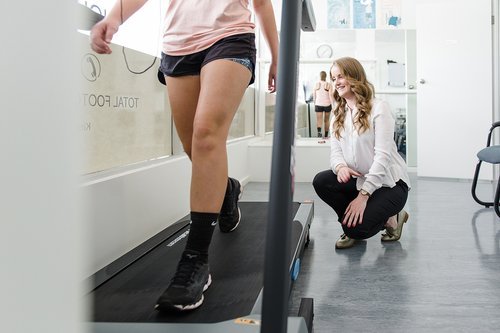
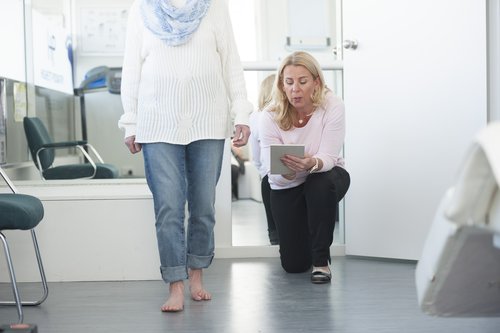

Foot and Ankle
Your neutral position is measured against your resting stance position, along with other measurements are used to help determine the personal script of your orthotics.
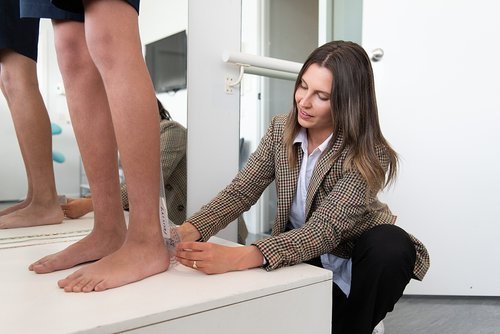
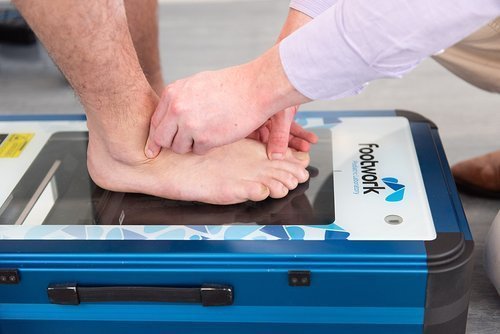
3D Scanning
Our equipment utilises three-dimensional scanning to ensure the most accurate capture of your foot. This is vital to facilitate maximal arch contour and correction for your foot shape and type.
Click here to read more about how they work and are manufactured!
Orthotic Prescription
Orthotics we prescribe are made with recycled Nylon, EVA, or carbon fibre to provide patients with firm support. The selected material should provide the required flexibility based on foot type and patient pathology. Thinner nylon devices offer the most flexibility without compromising support.
For patients with sensitive foot problems, including the elderly or people with serious injuries such as ulcers, softer, more flexible orthotics will be made to provide support without causing further pain to already sensitive areas.
Orthotics are prescribed for the individual foot; in many cases, the prescription will vary between the right and left foot. Patients can be assured that the expertise in orthotic prescription by our highly trained and qualified podiatrists will result in 100% satisfaction. Please see our 100% satisfaction guarantee under resources.
Orthotic Customisation
The following elements make up the customisation of a patient’s orthotic prescription:
Cup Depth: Heel cup depth is available in a range of sizes to provide more (deep cup) or less (shallow cup) surface area. Cup depth should be selected based on the underlying patient pathology as the inadequate surface area can reduce the efficacy of the orthotic.
Width: Orthotic width is often selected on the basis of shoe type, however, width should be selected according to the level of support required and the degree of pronation. Wider orthotics will provide more support to limit pronation, whereas narrower orthotics will allow for increased movement.
Fill: The depth of cast fill optimises the fit against the arch, thereby lowering or fully supporting the arch depending on the amount of support required. Fill should follow the arch of the foot and in patients with limited range of motion, fill should be shallower so as to not further reduce mobility.
Extensions and additions: There is a multitude of extensions and add-ons that can be used to further customise orthotics to fit a patient’s foot type, deformity, and underlying condition. Such extensions can significantly improve the effectiveness of an orthotic, leading to increased comfort, increased support, and improved quality of life.
For more information about custom orthotics please click the link below to take you to our specialised orthotic clinic website.
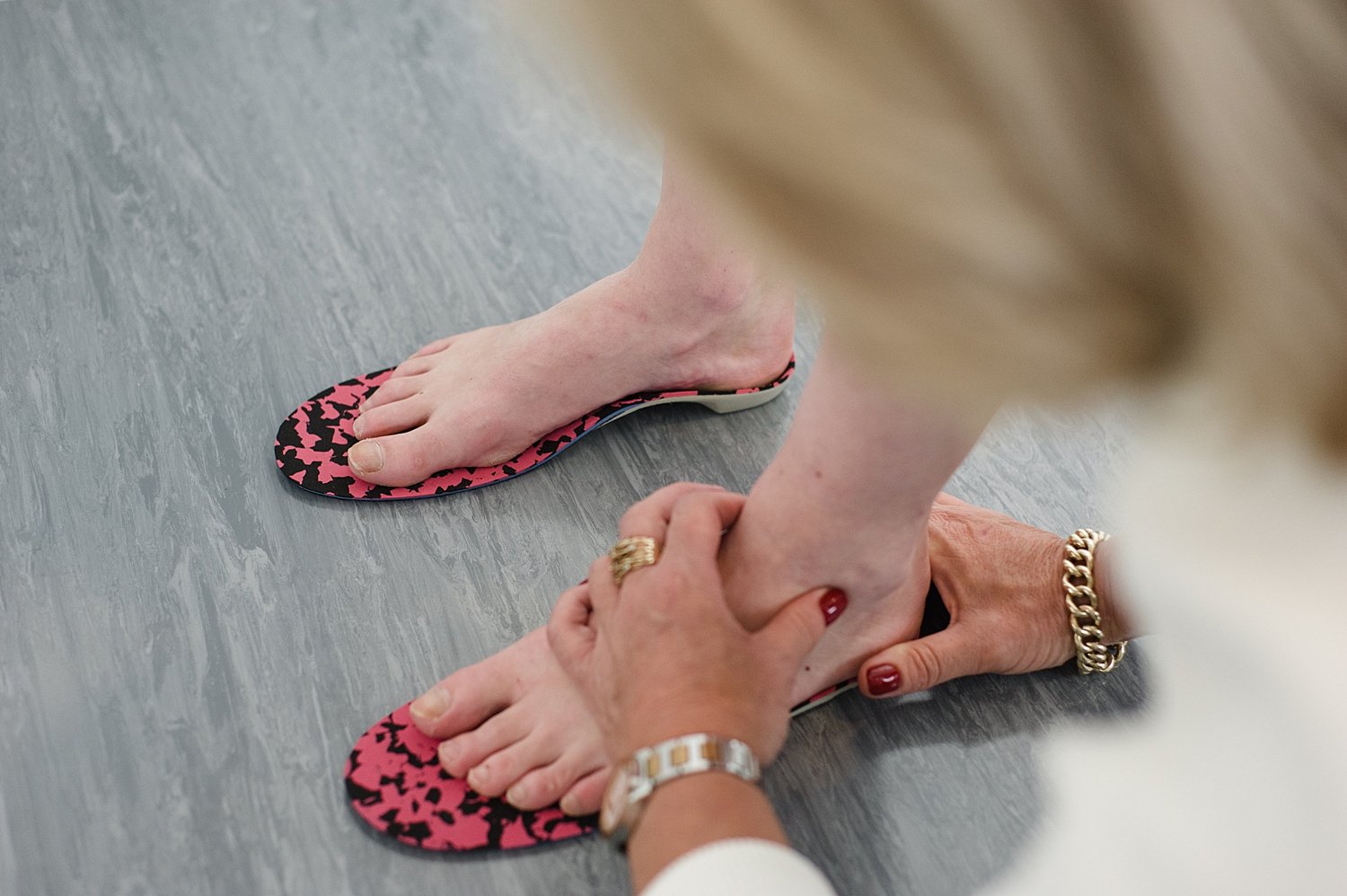



Orthotics for Children
At Highett Podiatry prescribe orthotics for children for many reasons. Children’s conditions that respond well to orthotic therapy are:
We understand that children grow very rapidly, so here at Highett Podiatry, We do custom Orthotics at a 25% less Costing for children under the age of 16 years..
FAQ's
How often do I need to get new orthotics for my child?
- Orthotics generally don’t wear out, but kids grow out of them.
- two years is the average time orthotics last for children as they usually fit for two full sizes of growth. Most children grow half a size a season ( one size a year ), although, after a rapid growth spurt, children’s orthotics may need replacing.
Can orthotics be harmful to children?
- Generally speaking, no.
- Although orthotics should only be prescribed or issued by a trained health professional or an expert in foot health, such as a podiatrist.
Will my child be in pain, getting used to orthotics?
- Orthotics are 3-D scanned and printed, ensuring a perfect fit. Due to accuracy of the manufacturing, it is unusual for a child to find the orthotics uncomfortable. Please seek advice from your podiatrist, as soon as possible, if your child is experiencing pain from their orthotics.
Orthotics FAQ's
Will my Orthotics be comfortable?
- At Highett Podiatry we guarantee your orthotics will be comfortable
- Click here to see our Guarantee policy
Will I need to buy new shoes for my Orthotics to fit in?
- Your shoe size should not change, although some of your shoes may not fit your orthotics.
- Reasons for this is that your shoe may be too narrow or shallow to accommodate your orthotics.
Why are custom Orthotics expensive?
- Costs involve the prescription, assessment and issue of the orthotic device made specifically for you
- The manufacturing lab uses the latest in 3-D scanning and manufacturing of your device
- Materials used are of the highest quality
- The latest technology is used within our clinic to ensure your orthotics are of the highest quality.
Do I need to wear my Orthotics all the time?
- This is individual to the patient. Some people feel the need to wear their orthotics at all times, where others can go periods of time without wearing them
- If your symptoms return without your orthotics get them back in your shoes
- Remember, your orthotics are like glasses, they only work when you are wearing them.
How often do I need to replace my Orthotics?
- Custom orthotics made from nylon rarely wear out. Some EVA devices can compress and will need to be replaced.
- Orthotics need to be replaced when they either wear out or become obsolete to your needs.
- Changes in foot and lower limb structure and alignment will need a new orthotic prescription.
Will Orthotics make my feer weak?
- This is debatable. Orthotics only work when you wear them and usually are worn by patients to combat a weakness or alignment issues.
- Your podiatrist will give you a strengthening program alongside your orthotic prescription and issue.
Do I need more than one pair of Orthotics for different shoes or activities?
- In some cases (rarely), an orthotic prescription for sport or running can differ from your regular standing and walking orthotics.
- Most people only require one pair of orthotics to move between shoes and activities.
Do customised Orthotics do the same job as the insoles I can buy at the chemist?
- Unfortunately, no. Customised orthotics are prescribed to fit your foot “like a glove” with the maximum control prescribed
- “Off the Shelf” or “arch supports” are made with a low control correction and low arch height, as not to cause any significant alignment problems for the wearer. These can sometimes offer temporary results and improvement for some patients, but most people will need more support, contour and alignment to get maximum results and be comfortable.
Always Consult A Trained Professional
The information in this resource is general in nature and is only intended to provide a summary of the subject matter covered. It is not a substitute for medical advice and you should always consult a trained professional practising in the area of medicine in relation to any injury or condition. You use or rely on information in this resource at your own risk and no party involved in the production of this resource accepts any responsibility for the information contained within it or your use of that information.
